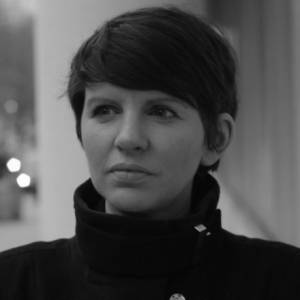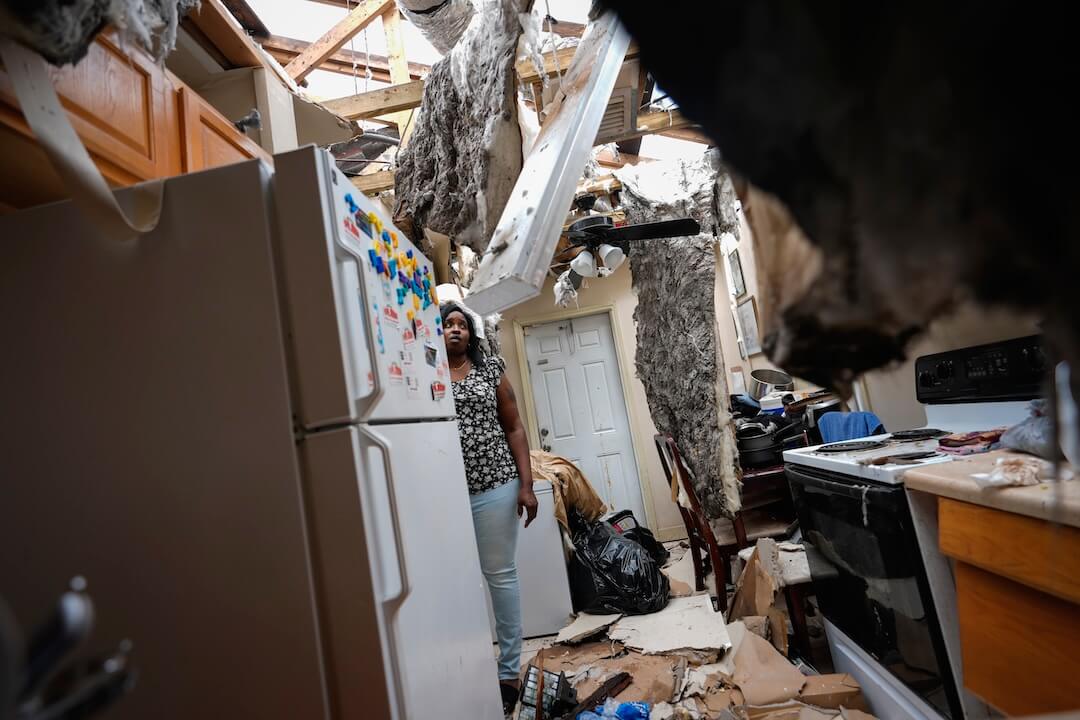Iona Craig, who reported on the aftermath of the botched Navy SEAL raid in Yemen for The Intercept from Yeman, did so with the help of the Pulitzer Center.

Iona Craig.
Grants from the Pulitzer Center go a long way for international journalists who eke out a difficult existence covering tough stories from dangerous places. The details of her recent Yemen experience should give pause to most journalists with relatively soft gigs, perhaps chained to desks, beholden to press conferences and not having much danger to face beyond a few nasty words from a politician.
I caught up with Craig earlier this month to ask how her piece — which challenged the Trump administration’s narrative on the Yemen raid — came together. Below is our edited conversation.
How did you wind up in Yemen in the first place?
The Middle East connection was my father. He’d worked in the region for 30-plus years but never been to Yemen. But it was his influence (he died in 2005) that drew me to the region. I got to Yemen purely out of curiosity, knowing there were very few journalists there combined with reading too many Freya Stark books.
How many journalists from reliable, mainstream organizations are based there? And how do most organizations cover the place?
There are no international journalists based there anymore. I lived in Yemen from October 2010 to January 2015. But the Houthis/Saleh (alliance) put an end to foreign journalists based in Yemen at the start of the war in March 2015.
There were two freelancers left at that time. Both were detained by the Houthis. Casey Coombs (also wrote for The Intercept) was the last, and he left on a stretcher from prison/Houthi custody. Now the likes of The New York Times rely solely on local Yemeni stringers. Foreign reporters fly in for a week or so and then leave. Although none have flown into the Hadi government side like I have, and now Sana’a International Airport is closed, there are currently no international journalists going in.
I was the first of the foreign reporters to get into the country after the war started, and all airports were closed. I went by boat from Djibouti in May 2015 and stayed for three weeks in the besieged city of Aden. I went back again at the end of July 2015 — was there for four months — two of those were not voluntarily.
The BBC is probably the main exception as they use a very good London-based British-Yemeni journalist. She and I have the advantage of being women, so we can travel around the country more easily and safely as women dressed in Yemeni female garb of all-black burqa, including face veil.
Why were you there this time? Was it just coincidence that the Navy SEAL raid took place while you were there?
Last fall, I was looking at going back to Yemen for my fourth visit since no longer living there full-time and since the war began. I got commissioned by Harper’s Magazine to do a human-interest piece on the suicide bombers from one district in southern Yemen. But I also wanted to do some more reporting on the humanitarian crisis.
Once I got the Harper’s commission but realized their expenses budget wouldn’t even cover my flights to and from Yemen, I applied to the Pulitzer Center for a travel grant. I was due to be there for 28 days to file four pieces in total — one being a long-form piece. Then the SEAL raid happened three days before I was due to leave. So yes, it was coincidence. I just happened to be there.
What resources did you need to do The Intercept story? Could you afford to stay in a hotel?
Resources-wise, as a freelance print journalist, I’ve never stayed in a hotel for more than three or four nights. No one has the money to cover costs even in an inexpensive place such as Yemen. Plus, for security reasons, it’s best not to be in a hotel.
I’m fortunate enough to have some very good and generous friends in Yemen who put me up, and I give them money for food, fuel, etc. Although I’m probably Yemen’s most dreaded houseguest. On three occasions I turned up to stay for a week at different friends’ houses in 2015 and was still there a month later.
On this particular story, the Intercept knew the importance of it and were more than willing to put the money up, but that’s unusual. For my own security I stayed with friends and their families in Aden and Mukalla on route. In Marib, I stayed in a hotel but we (translator and I) moved hotels over the three nights, again for security reasons.
How did you get to from wherever you were when you decided to do a post-mortem on the raid to the village where it took place? How long did you travel? Did you say that a car broke down on the way? If so, what did you do? What were the sorts of folks who served as “fixers” for you? And did you need some final approval to actually go to that village and talk to people?
I was in Aden (President Hadi/Saudi coalition territory) when the raid happened. It took five days of planning to get to al Ghayil in Bayda province. In peacetime it would’ve been about an eight-hour car journey. But in the civil war, the direct route would have involved crossing territories without permission from the Houthi/Saleh side — likely to end in being arrested for me and worse for any Yemenis I had with me. So, the second option was going through the heart of Shabwa Province.
When looking at that route and doing risk assessments while in the planning process it was, as I already knew, a sketchy option. There was fighting along the route, and it also involved driving through an area notorious for bandits and armed robbery on the road. Plus, my usual Yemeni travelling companion who I’d been working with in Aden wasn’t able to come with me, and this was a journey I knew I needed to take with someone who knew and trusted me and vice-versa.
So, the third option was taking the first 500-mile leg along the coastal route from Aden to Mukalla. I went on my own by public bus — the bus ran out of fuel en route so we had a bit of a delay — and then stayed with a friend and their family in Mukalla overnight. That Yemeni friend then drove me north at dawn the following day to a place called Bin Aifan. There, I switched cars and met up with a Yemeni friend who I’d known for several years who would be my translator, driver and companion. He then drove us west from there to Marib. We travelled as man and wife.
I was veiled, wore brown tinted contact lenses to cover my green foreigner eyes. He had his marriage papers, so we stayed in hotels as if we were man and wife. I just kept my mouth shut and never spoke English in public. That was all for security reasons.
I’d already been in contact with the senior figures in the village, but once in Marib we contacted them with the hope of going to al Ghayil the following day. I got permission from the two most senior tribal Sheikhs in the villages, as per Yemeni custom — Sheikh Aziz al Ameri and Sheik Abdulelah al Dhahab. Sheikh Abdulelah is now presumed dead after being targeted by at least two drone strikes since I saw him. They gave me permission over the phone but asked me to wait a day.
So we were then kicking our heels for 24 hours, and I had to keep a low profile. I didn’t want the Yemeni (Hadi) government, who currently control Marib, getting wind I was there or planning to go to al Ghayil because I didn’t think they’d be too pleased.
After a 24-hour wait, we headed to Yakla at 5.30 a.m. with two local activists — one who drove us in his SUV (I knew it would be a rough road in) and a female activist. In Yemeni culture where men and women are segregated, it was very good to have a Yemeni woman as well as men with me so I could interview the women and the men.
A White male going in would have very limited if any access to the women. I’d been told it would be about three hours to al Ghayil from Marib. It took us seven, six of which were off-road. Five hours into the journey the bottom of our car hit a rock bursting the oil pipe.
We hadn’t had phone coverage for four hours by that time, but I had a satellite phone with me. We called up Sheikh Aziz in al Ghayil and then sat on the side of a dry river bed for an hour waiting for one of the men from the village to come to the rescue. When they did arrive it was in a pickup with 30 bullet holes in the windshield form the SEAL raid.
Mabkhout al Ameri, who was driving it, nearly killed us all as he drove like an absolute maniac up and down rocky gorges for the last hour of the journey in. The route was little more than a donkey track and at one point we narrowly missed hitting a fleeing camel.
I was fortunate to be sitting in the front passenger seat holding on to the door handle with both hands. My translator was standing in the back hanging on for grim death. When we arrived in the village and the tribesmen gave us the traditional welcome of singing their tribal chant/song my translator scrambled out of the back of the pickup looking very green and just said: “I’m going to kill you!” I don’t know how he survived in the back of that truck being thrown around like a rag doll. We were in the village for three and a half hours to interview people, walk around the damaged buildings, and they gave us a very generous lunch.
But time was not on our side. I knew we needed to get back to our abandoned car before dark to either try and fix it or arrange with one of the tribesmen to take us all the way back to Marib. Thankfully Sheikh al Ameri and then another tribesman from a neighbouring village drove us back out rather than Mabkhout.
The guys then managed to patch our car up by gluing up the hole in the oil pipe. But that was another 45 mins sitting on the side of the dry river bed at dusk while that happened. On the way back, we stopped at the hospital (at around 11.30 p.m. by then) where the handful of wounded who braved that horrendous journey had been taken after the raid.
Unfortunately it turned out the’d all been discharged the day before. By the time we got to a hotel in Marib it was 1.30 a.m. Later that morning my translator and I drove back out from Marib to Bin Aifan). We met up with my friend again from Mukalla who picked me up and took me the 160 miles back to his house.
When you were finished, were there any complications with your luggage, your computer and finding a plane to take you back?
The plan was for me to head back to Aden, where I would fly out of Yemen. But tensions were rising around Aden airport at that point, and I made the call to abandon the last 500-mile leg of the return journey and try and get permission to fly out of Seiyun airport (back north of Bin Eifan where we’d just come from!).
But I needed special permission to do that, and flights were only twice a week. It took three days to arrange permissions and get my luggage from Aden on a bus to where I was in Mukalla. It turned out I made the right call. In those three days the airport in Aden closed because of fighting. By the time I got to Seiyun (another 200-mile drive), it was six days since I’d been in al Ghayil. I eventually flew out to Cairo after a night’s stay in Seiyun and got back to the UK a day later, minus my bag, which arrived destroyed and half-empty four days after I did. It had been driven over by a truck, and I’m still trying to claim compensation from Turkish Airlines. Not exactly a smooth journey overall, but we made it.
The whole way through, I was checking in every hour with two Yemeni contacts, one of whom runs a small private security firm in Yemen and the other being my friend and fixer who I usually work with but couldn’t come on this journey. They were looped in with all those I was travelling with and my editor Sharon Weinberger at The Intercept, so if I missed a check-in they would contact her. That’s my usual protocol when travelling in high-risk areas.
The fixers I used were essentially friends. I’ve lived in Yemen for over four years and worked there for over six years (unlike many journalists who come in for a few days and never return) so they are my friends. I would trust them with my life and wouldn’t be able to do what I do in Yemen without them. The main one was Ammar Derwish in Aden, who although he didn’t come with me made all the arrangements. He’s a medical doctor by trade, but we’ve worked a lot together over several years now and I’m in mounting debt to him.
Finally, say a few words about the role of freelancers these days in international coverage
As budgets have been slashed in the media industry, especially in my main field of print journalism, international news coverage has become heavily reliant on the work of freelancers. I worked for over four years in Yemen as a freelancer, or stringer, while living there and have done another two years going in and out.
We get paid per word that we write and often have to negotiate hard or even beg to get expenses paid for by those who commission us. This was the first time I’d been to Yemen in over six years and actually had all my flight costs covered. Before, I’d had to pay for them out of my own pocket. With costs of return flights to Yemen now at $2,000 (from a pre-war $350), over the last two years I’ve found myself paying to work.
I would never have gone back for this latest trip if it wasn’t for the grant from the Pulitzer Center. That grant, combined with my experience in Yemen — garnered from working as a freelancer in a country that has never had resident staff correspondents based there — meant I was able to cover a story that probably no other non-Yemeni journalist could.
And this is the rub now in international news: The most experienced and knowledgeable beat reporters are also the ones with the least access to funding. Meanwhile, the major TV networks want to have their familiar branded staff journalists fronting their reporting. This regularly results in large amounts of money being thrown at shallow — or worse still, grossly inaccurate — reporting which only adds to the sensationalized and simplified coverage seen on television, in newspapers or online.
There are of course some notable exceptions to this. But without those exceptions, I wouldn’t either want or be able to keep working as a journalist.
I wasn’t the only reporter to go to al Ghayil. At least one Yemeni journalist and a group of human rights workers went there from Sana’a — not the route I took in. But I also knew that (although I don’t actually agree with it) attention would only really be paid if the story was reported by a non-Yemeni journalist. That’s another hurdle that needs to be overcome.






